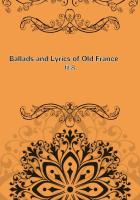There seemed to be at least one specimen from every known town in Holland. There were Utrecht water bearers, Gouda cheesemakers, Delft pottery men, Schiedam distillers, Amsterdam diamond cutters, Rotterdam merchants, dried-up herring packers, and two sleepy-eyes shepherds from Texel. Every man of them had his pipe and tobacco pouch. Some carried what might be called the smoker's complete outfit--a pipe, tobacco, a pricker with which to clean the tube, a silver net for protecting the bowl, and a box of the strongest brimstone matches.
A true Dutchman, you must remember, is rarely without his pipe on any possible occasion. He may for a moment neglect to breathe, but when the pipe is forgotten, he must be dying indeed. There were no such sad cases here. Wreaths of smoke were rising from every possible quarter. The more fantastic the smoke wreath, the more placid and solemn the smoker.
Look at those boys and girls on stilts! That is a good idea.
They can see over the heads of the tallest. It is strange to see those little bodies high in the air, carried about on mysterious legs. They have such a resolute look on their round faces, what wonder that nervous old gentlemen with tender feet wince and tremble while the long-legged little monsters stride past them.
You will read in certain books that the Dutch are a quiet people--so they are generally. But listen! Did you ever hear such a din? All made up of human voices--no, the horses are helping somewhat, and the fiddles are squeaking pitifully (how it must pain fiddles to be tuned!), but the mass of the sound comes from the great vox humana that belongs to a crowd.
That queer little dwarf going about with a heavy basket, winding in and out among the people, helps not a little. You can hear his shrill cry above all the other sounds, "Pypen en tabac!
Pypen en tabac!"
Another, his big brother, though evidently some years younger, is selling doughnuts and bonbons. He is calling on all pretty children far and near to come quickly or the cakes will be gone.
You know quite a number among the spectators. High up in yonder pavilion, erected upon the border of the ice, are some persons whom you have seen very lately. In the center is Madame van Gleck. It is her birthday, you remember; she has the post of honor. There is Mynheer van Gleck, whose meerschaum has not really grown fast to his lips--it only appears so. There are Grandfather and Grandmother, whom you met at the Saint Nicholas fete. All the children are with them. It is so mild, they have brought even the baby. The poor little creature is swathed very much after the manner of an Egyptian mummy, but it can crow with delight and, when the band is playing, open and shut its animated mittens in perfect time to the music.
Grandfather, with his pipe and spectacles and fur cap, makes quite a picture as he holds baby upon his knee. Perched high upon their canopied platforms, the party can see all that is going on. No wonder the ladies look complacently at the glassy ice; with a stove for a foot stool one might sit cozily beside the North Pole.
There is a gentleman with them who somewhat resembles Saint Nicholas as he appeared to the young Van Glecks on the fifth of December. But the saint had a flowing white beard, and this face is as smooth as a pippin. His saintship was larger around the body, too, and (between ourselves) he had a pair of thimbles in his mouth, which this gentleman certain has not. It cannot be Saint Nicholas after all.
Nearby, in the next pavilion, sit the Van Holps with their son and daughter (the Van Gends) from The Hague. Peter's sister is not one to forget her promises. She has brought bouquets of exquisite hothouse flowers for the winners.
These pavilions, and there are others besides, have all been erected since daylight. That semicircular one, containing Mynheer Korbes's family, is very pretty and proves that the Hollanders are quite skilled at tentmaking, but I like the Van Glecks' best--the center one--striped red and white and hung with evergreens.
The one with the blue flags contains the musicians. Those pagodalike affairs, decked with seashells and streamers of every possible hue, are the judges' stands, and those columns and flagstaffs upon the ice mark the limit of the race course. The two white columns twined with green, connected at the top by that long, floating strip of drapery, form the starting point. Those flagstaffs, half a mile off, stand at each end of the boundary line, which is cut sufficiently deep to be distinct to the skaters, though not deep enough to trip them when they turn to come back to the starting point.
The air is so clear that is seems scarcely possible that the columns and the flagstaffs are so far apart. Of course, the judges' stands are but little nearer together.
Half a mile on the ice, when the atmosphere is like this, is but a short distance after all, especially when fenced with a living chain of spectators.
The music has commenced. How melody seems to enjoy itself in the open air! The fiddles have forgotten their agony, and everything is harmonious. Until you look at the blue tent it seems that the music springs from the sunshine, it is so boundless, so joyous.
Only when you see the staid-faced musicians do you realize the truth.
Where are the racers? All assembled together near the white columns. It is a beautiful sight. Forty boys and girls in picturesque attire darting with electric swiftness in and out among each other, or sailing in pairs and triplets, beckoning, chatting, whispering in the fullness of youthful glee.
A few careful ones are soberly tightening their straps; others halting on one leg, with flushed, eager faces, suddenly cross the suspected skate over their knee, give it an examining shake, and dart off again. One and all are possessed with the spirit of motion. They cannot stand still. Their skates are a part of them, and every runner seems bewitched.















